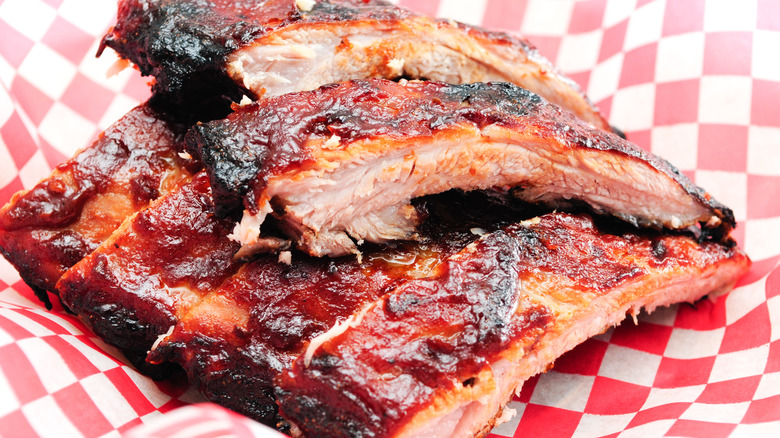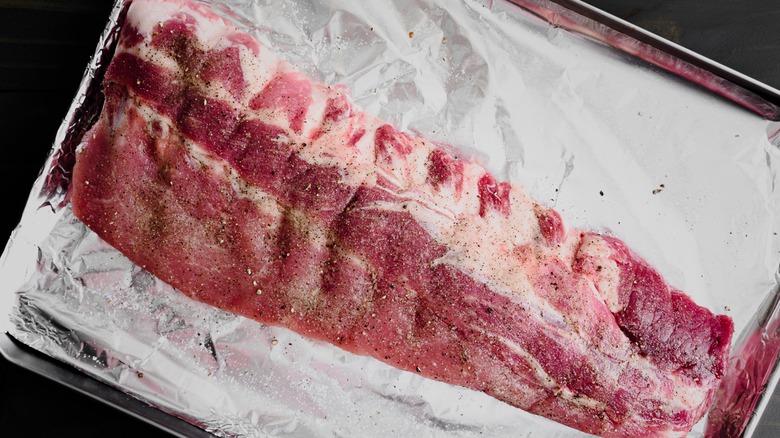What Temperature Should Ribs Be Cooked To?
Ribs are some of the most popular dishes at a cookout. Everyone loves the way properly-cooked ribs fall right off the bone and are still tender and juicy. Whether it is oven-baked barbecue baby back ribs or smoky sweet barbecue beef short ribs, there are so many delicious ways to enjoy this dish.
Before ribs can be devoured, they need to be properly cooked, and that includes checking their internal temperature. Internal temperature can vary slightly depending on the size and how long they're cooked, but generally speaking, ribs should reach an internal temperature of 200 degrees Fahrenheit. This temperature applies to both pork and beef ribs. Overall, a good range to aim for is between 190 and 205 degrees Fahrenheit. To check internal temperature, a food thermometer, instant-read thermometer, or thermometer probe will do the trick. These are easy to find online and in stores.
According to the United States Department of Agriculture (USDA), both pork and beef ribs are safe to eat when the internal temperature is at least 145 degrees Fahrenheit. Ribs should also be allowed to rest for at least 3 minutes after being removed from their heat source, regardless of if they are pork or beef ribs. It is important to note that this temperature is just the minimum in order for the ribs to be safe to consume, but typically, as mentioned above, ribs will be at a higher internal temperature when they are finished cooking.
The right temperature for ribs
While 200 degrees Fahrenheit is the ideal temperature for ribs, it is important to understand that both pork and beef ribs can be safe to eat at lower temperatures, as long the internal temperature is at least 145 degrees. According to the USDA, temperature is one of the best ways to measure whether food is fully cooked. Reaching a safe internal temperature when cooking meat is essential to preventing foodborne illnesses. When checking temperature on ribs, an instant read thermometer should be inserted in the thickest part of the meat between bones.
The reason ribs are usually a much higher temperature than 145 degrees Fahrenheit is because the collagen in the meat needs to melt into a gelatin, which is part of what makes ribs so tender. However, collagen will not melt unless temperatures are 170 degrees or higher. The goal is to have ribs that are tender and juicy but not so overdone that they become mushy. Then your dish will be maximized for flavor and juiciness.

